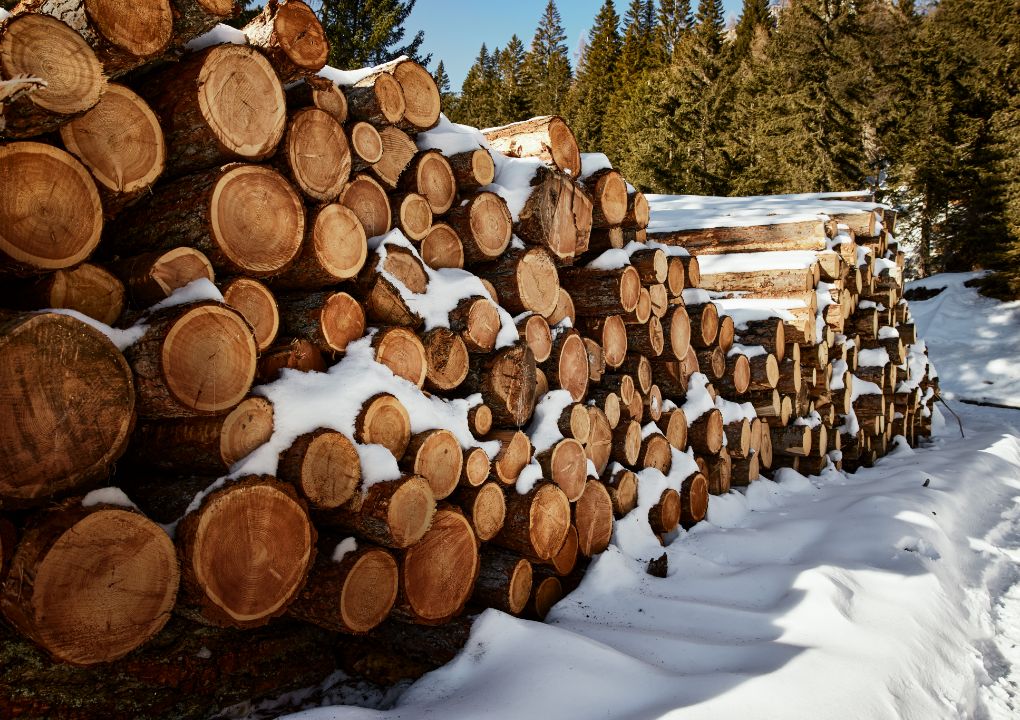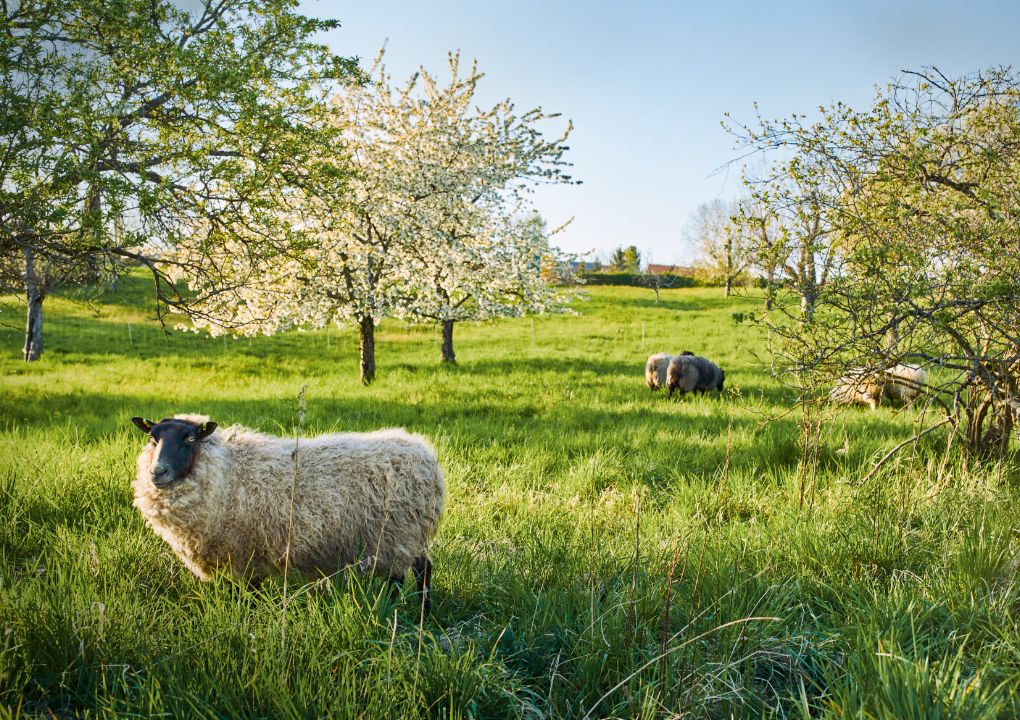
Leading in more ways than one
STIHL is expanding its dual technological leadership in the field of battery-operated and gasoline-powered products – with proprietary innovations in development and production. The development of battery techno logies and energy management systems, as well as the lower-carbon MotoMix Eco special fuel, form the foundation for drivetrain technology transformation.
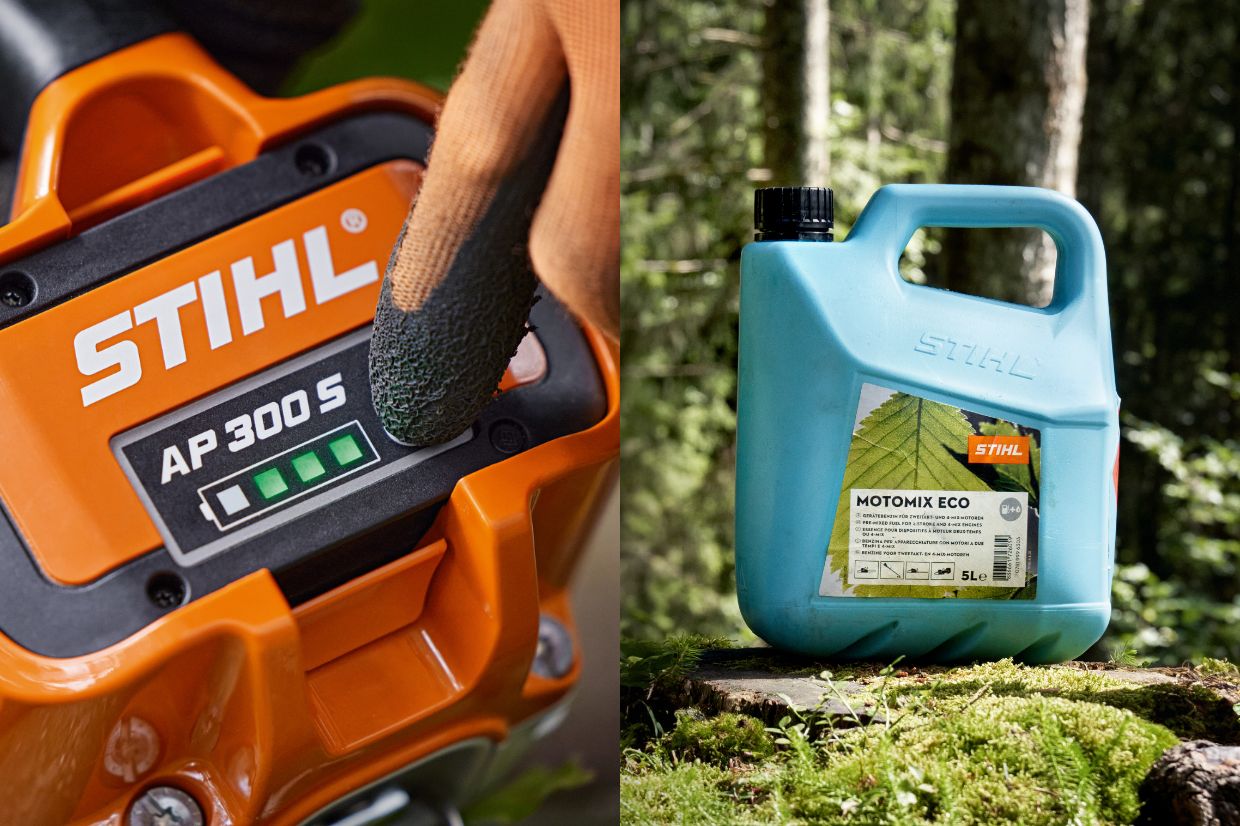
Thinking further, going further
We have been a technology leader for almost 100 years. This is where our inspiration for the future also lies: the desire to develop and manufacture products that are innovative, long-lasting, and second to none in quality. Products that make it easier for people to work in and with nature.
Our founder, Andreas Stihl, always placed the demands of our customers at the forefront of the company’s activities, which is why he never stopped enhancing STIHL products and launching new tools onto the market. In 1959, he revolutionized forestry work with the STIHL Contra, the first gearless gasoline-powered chainsaw. Based on the technical foundation laid by the Contra, STIHL has workedt irelesslyt of urthere nhancei tsc hainsaw models. Whether it be the anti-vibration system (first installed in the Contra in 1965), intelligent engine management for reducing fuel consumption, innovations to cut exhaust gases, weight-saving magnesium pistons, fuel injection, or battery technology: Performance, durability, service, convenience, and safety – as well as protecting the environment – always have been and always will be the principles on which all STIHL products are designed. Through innovation, we are working to cement our market leadership.
Our customers have high standards, which we can meet thanks to our traditionally high level of vertical integration – something that we increased even further in the reporting year with the acquisition of Mogatec GmbH. This vertical integration ensures that our knowledge of all our technologies and products is as comprehensive as possible. We demand the same standards from our suppliers, since working hand in hand with them is the only way we can deliver STIHL premium quality. Our international and interdisciplinary development team makes sure that our products offer an optimum combination of performance, durability, and ergonomics. As a result, STIHL products do more than just meet bare minimum legal and technical requirements when it comes to safety, emissions, and noise exposure. In some cases they go far beyond the minimum standards.
Sustainable product innovations
Low-emission 
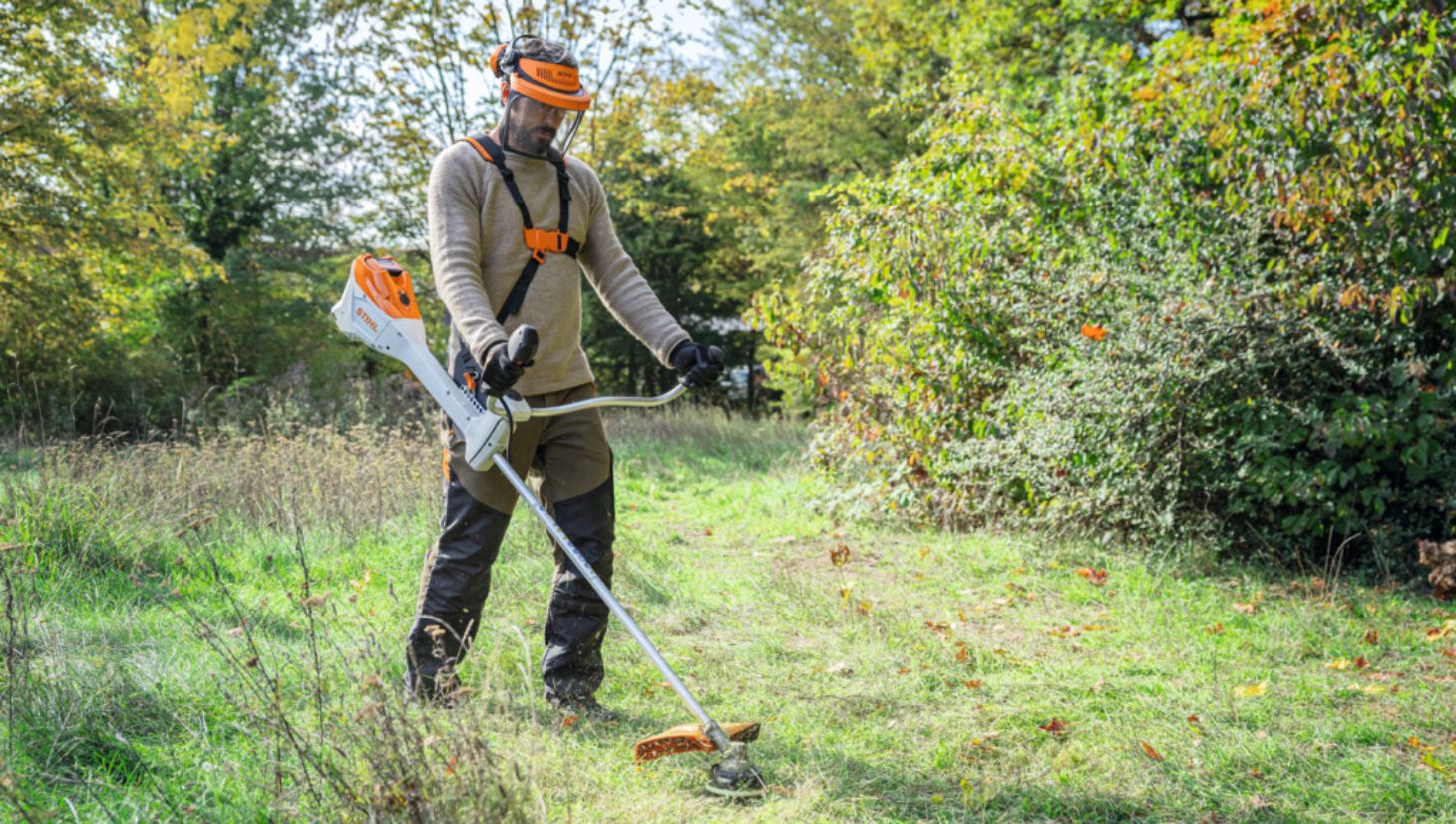
FSA 200
The high-performance FSA 200 cordless clearing saw is now part of STIHL’s range of products for professionals. It mows through tall grass and scrub effectively and comfortably without producing any emissions. At the same time, the tool can be employed in noise-sensitive areas. The FSA 200 also helps protect health thanks to its innovative ergonomics and technology.
Innovative 
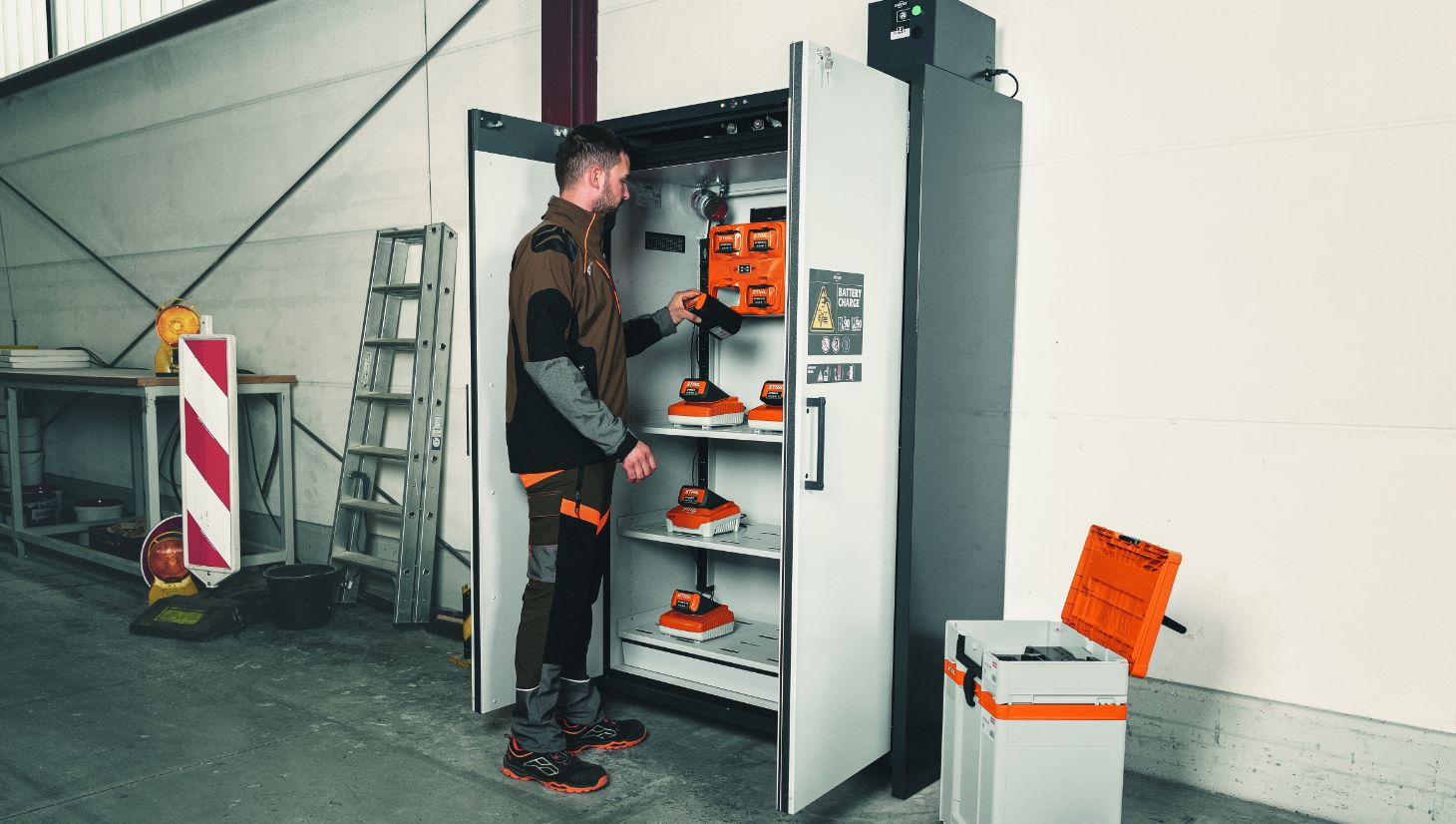
Battery charging cabinets
STIHL offers two battery charging cabinets for professionals that were designed together with cabinet specialists Asecos. Thanks to a 400-volt connection and integrated warning system, the cabinets can charge up to 16 (M model) or 32 (L model) batteries reliably and efficiently.
Award-winning 
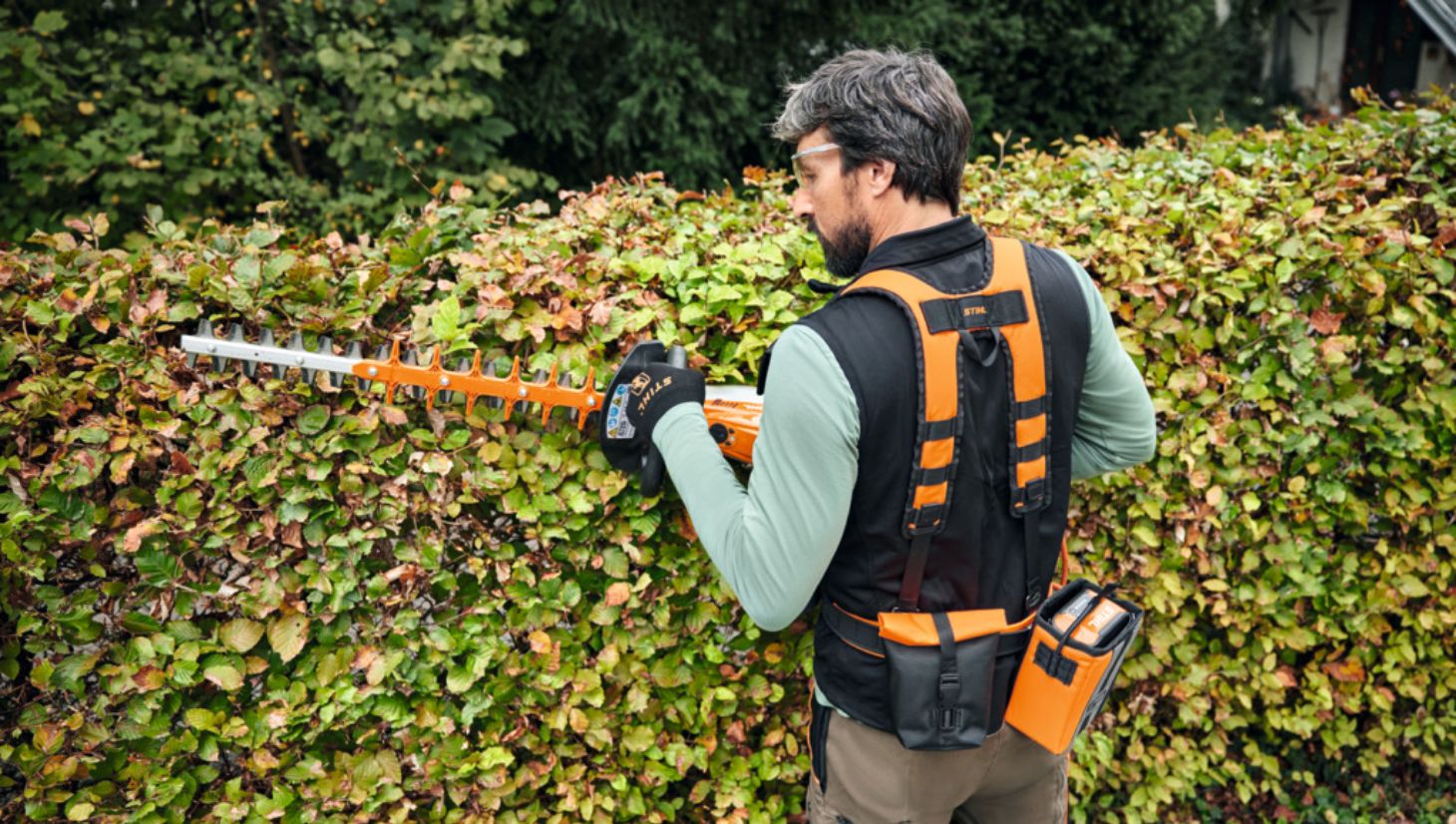
Modular belt system
In May 2023, STIHL received a silver medal in innovation for the ADVANCE X-Flex belt system at the demopark industry exhibition. The modular system provides maximum flexibility and optimum ergonomics. It consists of hip belts, a shoulder harness, a clearing saw carrying system, and various clip-on pockets. The components can be combined as needed, giving forestry and landscaping professionals a lightweight tool belt, an ergonomic harness for brushcutters, or a battery belt, to name just a few examples.
Quality
Durability, reliability, ease of use, high-quality manufacturing, and repairability are what make all STIHL products stand out from the competition. These characteristics are part of our corporate philosophy. The same tools are passed down from generation to generation, from grandparents to grandchildren. Long product lifecycles not only save customers money, they can also help to conserve resources.
We lay the groundwork for our proven STIHL quality at the product development stage. Testing methods for quality assurance (often developed in-house), and continuous improvement are all essential stages of the product development process. These methods include endurance testing in specially designed testing facilities such as those at STIHL Brazil in São Leopoldo or at the Waiblingen development center: All kinds of tools – from chainsaws and hedge trimmers to mistblowers – are put through their paces around the clock at the testing facilities. Each model in our range goes through a meticulously structured testing plan controlled through our own special testing program. The software simulates typical usage in real-life situations, and the resulting data helps us to ensure that our tools work smoothly and reliably. Besides endurance testing, we also conduct a variety of other procedures, including vibration and noise tests, as well as numerous material, fuel, and lubricant tests. Here you can find out which testing methods are used for battery packs
Quality at STIHL also means optimally combining all product components to create the greatest possible benefit for to the customer. With this in mind, STIHL has always maintained a high level of vertical integration in the manufacture of its products. Our quality management system ensures that top quality is achieved at all times. We pursue a sophisticated and comprehensive quality assurance strategy in production and materials management. A large number of testing and quality assurance procedures are also deployed at STIHL Group production facilities, including cameras on the production line that carefully monitor whether all components are correctly assembled.
As part of our efforts to promote a sustainable, circular economy, repairability is an additional aspect of our development work. Customers can obtain spare parts from STIHL dealers or through the online store. Even once we stop manufacturing a particular series, spare parts are still a vailable for at least ten years. We have always been firm advocates of the right to repair, which the European Commission and the European Parliament introduced for consumers in 2023. In 2022, we adopted a company standard that created a common understanding of the right to repair throughout the Group. At the same time, it is also our responsibility to protect consumers from illegal or improper manipulation of parts that are essential to a product’s environmental and/or safety performance. Our standard therefore determines what repair work should be left to authorized dealers. With over 55,000 specially trained dealers, our broad and global network of experts provides seamless maintenance and can also repair tools if necessary.
With digital solutions such as the STIHL connected app, we can deliver an even better quality of service and support to our customers. For example, the app allows professional users to keep track of the condition of their tools and notifies them in good time of upcoming maintenance. Customers can use the system to arrange a service appointment with their local dealer and submit relevant tool information in advance if they wish. The result is faster servicing and greater tool availability.
The vital importance of quality at STIHL is also reflected in its inclusion as a corporate objective, measurable in key performance indicators. We analyze how these figures develop and introduce improvements as and when necessary. We also utilize structured customer feedback for this purpose.
Research and development
Our innovation and quality at STIHL are fueled by our expertise, which is why we are continuously expanding our research and development (R&D) activities. I n 2 023, w e i ncreased t he n umber of employees in R&D at the founding company in Waiblingen by a significant margin. Today, a global team of over 1,000 engineers and technicians from a variety of departments is busy improving existing products and developing new ones. We recently built up knowledge in the areas of digitalization, robotics, sensors, and artificial intelligence in particular.
In our global group of companies, we ensure that R&D takes into account the individual requirements and circumstances of local markets and our manufacturing plants. To this end, we regularly obtain feedback from engineers at our international production companies to be sure that a product is the right fit for its intended sales markets, and that we have the capabilities to manufacture the product as designed. Overall responsibility for R&D activities lies with the Executive Board member for Research and Development at the founding company. This is also where central product development is located. All the departments involved must meet the strict guidelines of our STIHL product development process, which are defined in our internal directives.
STIHL held more than 2,800 patents and patent applications in the reporting year, protecting more than 800 separate inventions. Many of those patents directly support our commitment to sustainability. Our automated patent analysis tool makes it possible to assign patents to the United Nations Sustainable Development Goals (SDGs). Accordingly, most of the 182 relevant patents contribute to reducing emissions and therefore have an impact on SDG 13 (climate action) and SDG 9 (industry, innovation, and infrastructure). Overall, our R&D activities allow us to enhance scientific research and upgrade technological capabilities – a contribution to achieving one of the targets of the United Nations Sustainable Development Goal SDG 9.
Drivers of innovation
As well as introducing stricter emissions requirements for our internal combustion engines, we have also enhanced our innovations in the cordless segment. Hydrocarbon (HC) and nitrogen oxide (NOx) limits of zero grams per kilowatt-hour have applied to certain products since the start of 2024 in the U.S. state of California, which equates to a de facto ban on internal combustion engines for those product segments. From our perspective, regulatory decisions such as these are yet another source of inspiration for the two-pronged approach of our R&D activities: We continue to optimize our internal combustion engines to enable the use of low-CO2e* fuels, for example, with the aim of maintaining our market-leading position in gasoline-powered tools. At the same time, we are expanding our expertise in the battery segment in order to continuously increase sales of cordless tools (see story).
* CO2e (CO2 equivalent) is a unit of measurement indicating the effect of all greenhouse gases on the climate, which is expressed as the equivalent effect of carbon dioxide (CO2).
STIHL also finds the best solutions through intensive dialogue with external experts at universities and other institutions, such as Prof. Jürgen Haag from Esslingen University of Applied Sciences. In the reporting year, we organized an exclusive STIHL event together with Prof. Haag where students were able to gain fascinating insights into theoretical and practical aspects at STIHL in a series of lectures and product presentations. STIHL also proposes topics for use cases in lectures, including as part of the Cutting Edge Award student competition. Some employees also teach at a variety of universities and colleges. Our network of higher-education contacts forms the basis for innovative products and technologies. In 2023, a total of 45 students wrote their final theses on innovation at STIHL, including on products in the circular economy.
Expertise in digitalization and electronics
We have long recognized the opportunities offered by digitalization. In 2022, we further enhanced our organizational focus on the topic and incorporated the digitalization of hardware into our development a ctivities, i mproving p rocesses a nd c reating sy nergies as a result. Analyzing the large volumes of production data we create (known as “big data”) allows us to manage our manufacturing more efficiently or further optimize the sale and use of STIHL equipment when it comes to factors such as fuel and electricity consumption. What is more, operating data lets us know where we can make changes to improve the design and engineering of our products. We also intend to leverage our growing expertise in software and apps with the particular aim of making our tools even easier to use.
STIHL is investing in fields such as robotics, sensors, and artificial intelligence in order to offer complete solutions on the market and round out its data expertise with the hardware to match. In 2016, we opened a state-of-the-art center of excellence for battery and electrical technology in Waiblingen, Germany. Five years later, we enhanced our battery strategy by teaming up with the Elrad International Group to found a joint venture for the production of electronic assemblies.
Circular economy
Circularity is a key part of our sustainability strategy. A circular economy is geared toward consuming as few primary resources as possible and minimizing waste. STIHL follows the 5 Rs principle: reduce, reuse, repair, refurbish, and recycle.
The efficient use of resources has always been a watchword in our production. Our durable, repairable products also conserve resources, as reusing and refurbishing existing products is one of the main elements of a functioning circular economy. Devices or tools no longer fit for use can be recycled as a final step. Recycling is a particular focal point for cordless products. In pilot projects with our authorized dealers, we test systems for collecting portable old batteries and sending them for recycling.
We are striving to further optimize our processes and products in the interests of creating a circular economy. At the product development stage, this relates to component recyclability: We aim to make our tools reusable to the greatest extent possible. To this end, we launched a pilot project in late 2022 to investigate the potential of developing a clearing saw that is fully circular in terms of its manufacture and use.
In line with the goal of a sustainable circular economy, we follow the 5 Rs:
In 2023, we began analyzing the potential for increasing the share of secondary raw materials in our products. The first step of this process involved defining the most important fields of action and researching solutions already established on the market. We are currently assessing the findings. Our handling of environmentally critical raw materials and the avoidance of hazardous process chemicals are also important aspects of our circular economy agenda.
Product safety
We want our customers to use our tools safely. It goes without saying that our products satisfy technical and legal standards and are designed according to the state of the art. The continuous advancement of product safety is part of our DNA, which is why STIHL is a leading presence in global working groups for safety standards issued by organizations such as ISO, ANSI, CSA, and IEC. This allows us to share our knowledge with the world. In the past, STIHL’s own findings on the strength of guards and handles and electronic circuits and sensors have been incorporated into international standards.
As a technology leader, we take great pride in the countless innovations we have produced, especially in the area of customer safety. To ensure that our customers are fully on board with our safety philosophy, authorized dealers provide product instruction and safety training. Buyers in our online shop can also take advantage of this offer. Our RESCUE SAW MR – Mixed Reality Emergency Services Saw Simulator virtual training platform, which has already received multiple awards, shows how digitalization can contribute to even greater safety. The platform was originally designed to enable emergency response teams from fire departments and civil protection organizations to practice the safe handling and proper use of chainsaws and emergency services saws in a digitally augmented training environment.
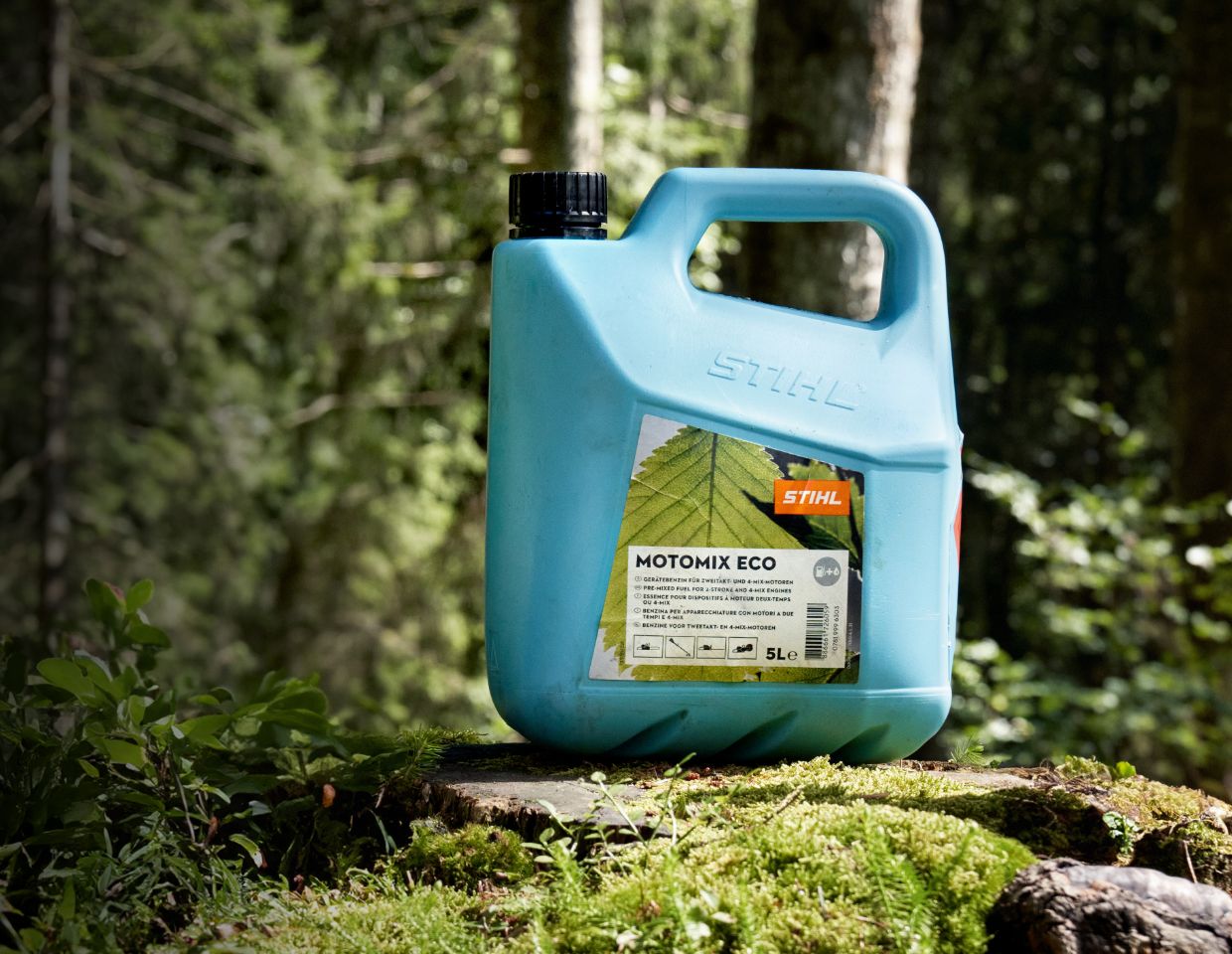
Leading in more ways than one
STIHL is expanding its dual technological leadership in the field of battery-operated and gasoline-powered products – with proprietary innovations in development and production. The development of battery techno logies and energy management systems, as well as the lower-carbon MotoMix Eco special fuel, form the foundation for drivetrain technology transformation.
Bayerische Staatsforsten, the German state of Bavaria’s forestry service, bought 300 battery-operated chainsaws from STIHL in 2022. Since then, foresters have been using the tools for cultivation, conservation, and tree maintenance, along with other light tasks. The result is a zero-emission approach to forestry – at least in part. In other places, however, Bayerische Staatsforsten continues working with tools powered by combustion engines. Why? “There still aren’t any adequate battery-operated tools for forest thinning and felling large trees, where you need powerful chainsaws,” says Dr. Holger Lochmann, Senior Vice President of Innovation at STIHL. “The main challenges are the weight and battery life of the lithium battery packs.”
Those packs would have to be roughly ten times lighter for users to get the same battery life and performance that they can with a gasoline-powered tool. If a chainsaw consumes ten liters of fuel for a day of work, a forester would have to carry more than 100 kilograms of battery packs through the forest to obtain the same performance as today. “That’s unrealistic,” says Dr. Lochmann.
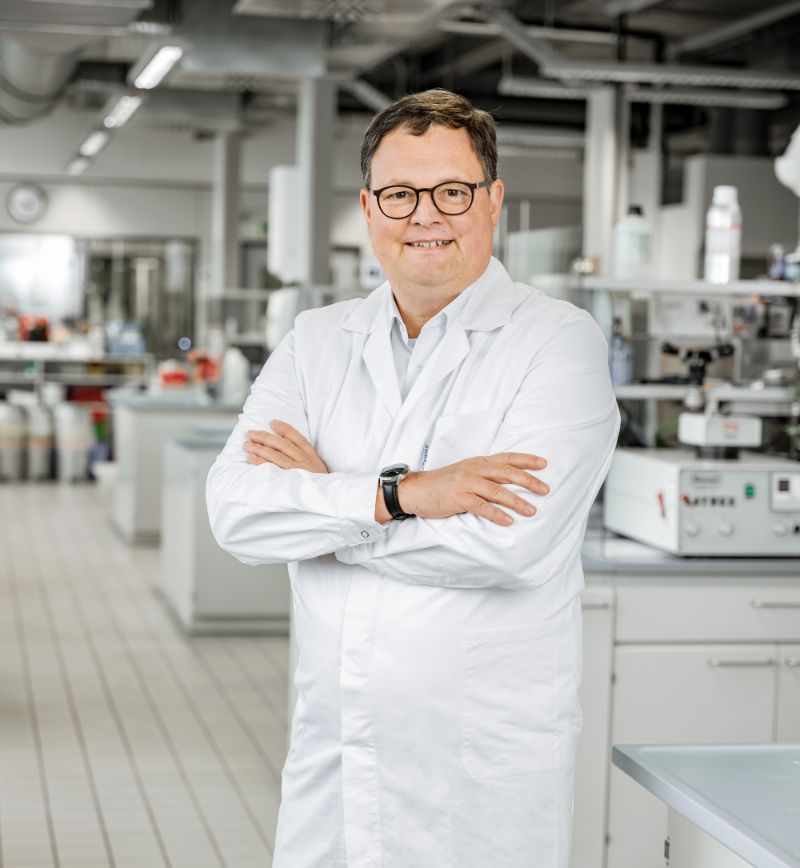
»Synthetic fuels allow us to achieve the same performance while reducing carbon footprint significantly.«
Senior Vice President of Innovation
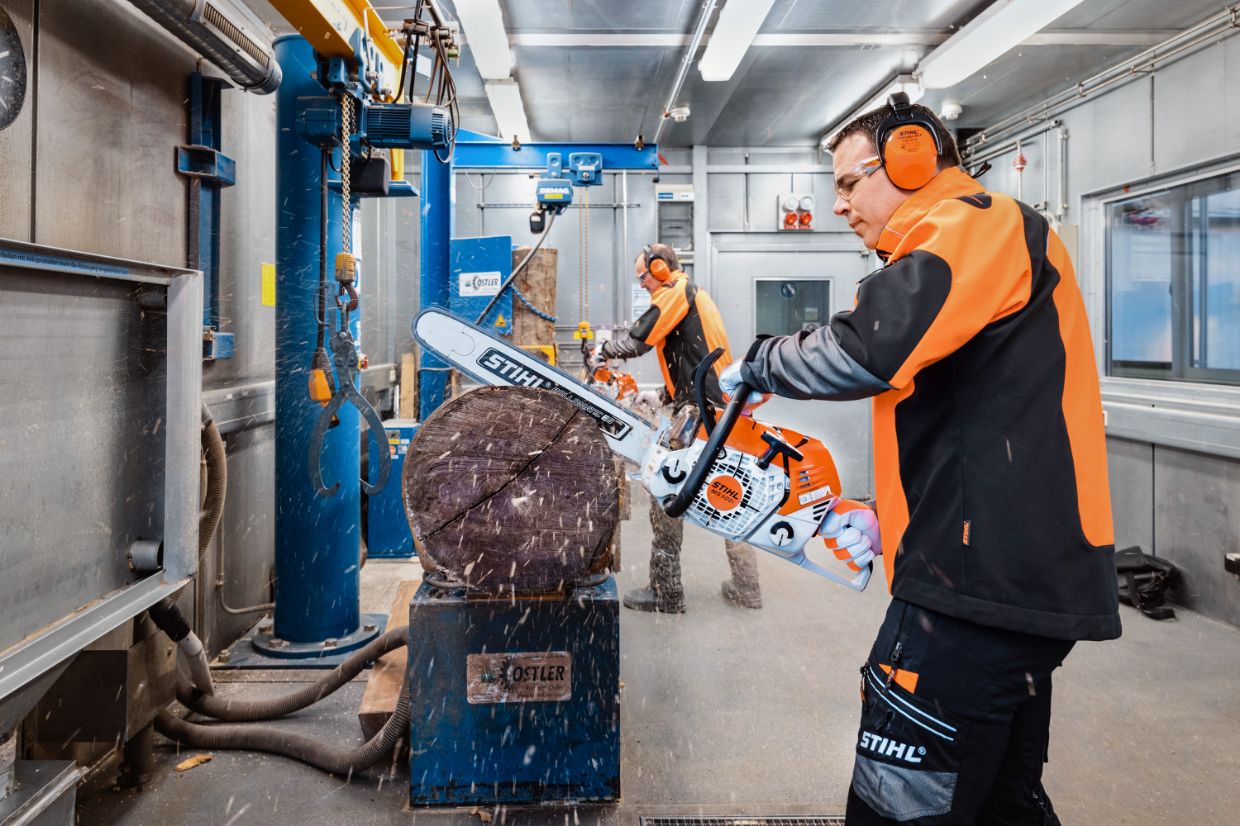
Research on all drive technologies
The example shows that battery products are a climate-friendly alternative for forestry work and home garden maintenance alike. But there are situations where they fall short – at least today. “There will always be areas without charging infrastructure where you’re still only going to be able to work with internal combustion engines in the future,” Dr. Lochmann predicts. That is why STIHL is performing research on more efficient engines and fuels, even as it advances battery technology. “We want to secure technological leadership in both fields,” Dr. Lochmann explains.
Biofuels and e-fuels offer a virtually carbon-neutral way of using STIHL products. E-fuels are manu factured by capturing CO2 from the atmosphere and generating hydrogen with the help of green electricity. The hydrogen is then converted, with the CO2, into methanol, which can then be used to produce fuel. “All of our products with combustion engines are already e-fuel-ready today,” says Dr. Lochmann, who has conducted extensive testing with the initial output from the pilot production facilities. Because sufficient quantities of these fuels are not available yet, STIHL experts are looking for alternative lower-carbon components.
lower CO2 emissions
than with conventional fuels are possible with the bio-based MotoMix Eco special fuel.
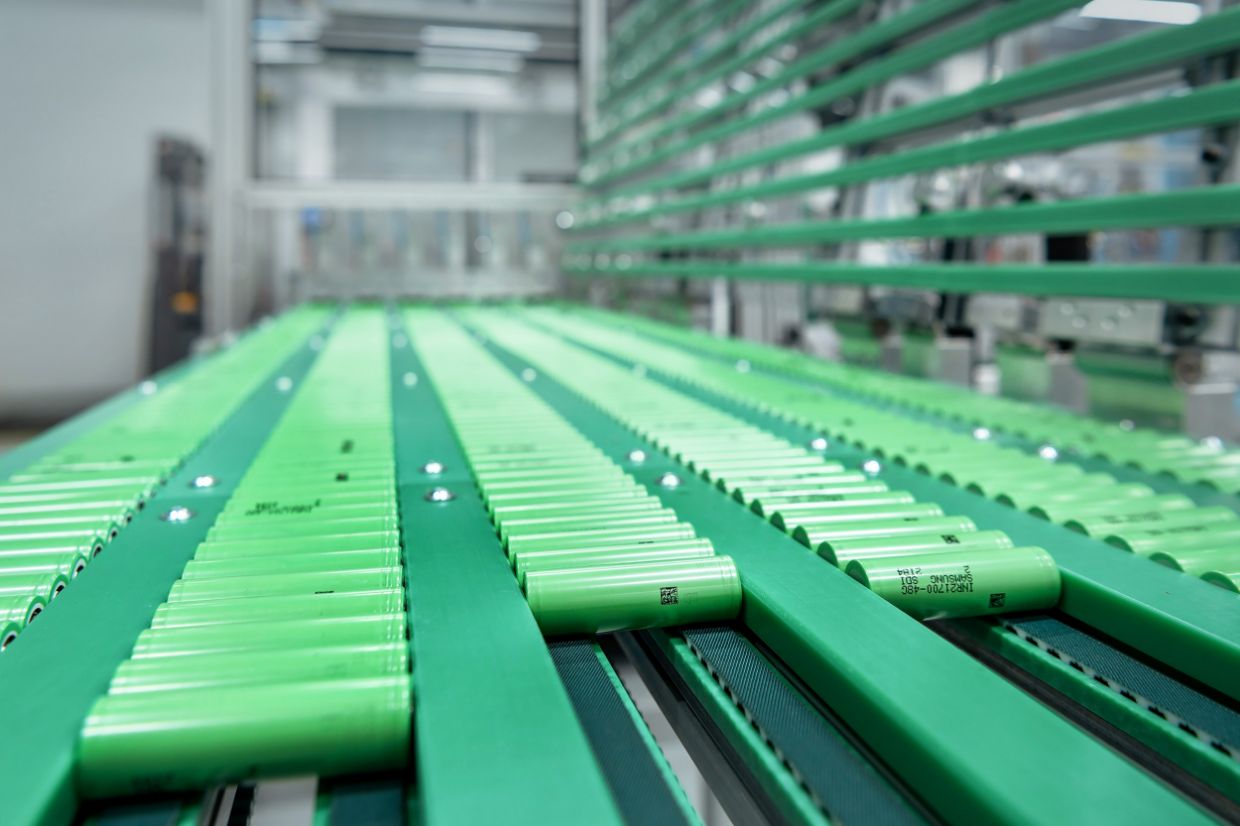
»Producing EC motors in Waiblingen is an important step toward further increasing the performance and quality of our battery-operated tools.«
Senior Vice President of Innovation
Advancing innovation with MotoMix Eco
One unique breakthrough from STIHL that has the potential to become a technology champion is MotoMix Eco for two-stroke engines. This bio-based special fuel contains 10 percent raw materials from renewable sources, such as wood by- products and residues from forestry. As a result, burning it produces 18 percent less CO2 than conventional fuels. “Synthetic fuels allow us to achieve the same performance while reducing carbon footprint and emissions significantly,” Lochmann explains. MotoMix Eco 2 and 3, the next innovations in development, are set to reduce CO2 emissions from fuels further in the years ahead.
STIHL is also driving forward innovation in the second strategic field: battery-operated tools. “We have been developing battery technology for nearly 20 years and have made tremendous progress,” Dr. Lochmann says. “The latest milestones are the AP 500 S battery solution, with power laminate technology, and the MSA 300 chainsaw with a 3 kW motor, our most powerful one on the market right now. The chain speed, an important parameter for the pros, is absolutely comparable with gasoline-powered saws. And we’re aiming high: Between now and 2035, we want to increase the share of sales accounted for by battery-operated products from 24 percent to 80 percent.”
Investments in battery segment
On the path to leadership, STIHL is constantly amassing know-how and expertise. The first cordless hedge trimmer hit the market in 2009. Since 2020, the Group has been making battery packs in Waiblingen. In 2024, it plans to start manufacturing battery-operated tools at the site of the founding company, with the new production site in Oradea, Romania, following suit one year later. Waiblingen is also set to start producing EC motors, the heart of the battery-operated tools, in 2025 (see box).
STIHL is already developing these motors. Many of the components found in the battery-operated saws – such as housing parts, handles, slides, chains, and cable harnesses – are made in-house. “Producing EC motors in Waiblingen is an important step toward further increasing the per formance and quality of our battery-operated tools,” Dr. Lochmann says. The goal is to achieve new advancements in innovation – for battery-based devices and low-carbon combustion engines alike.
EC motors made by STIHL
STIHL plans to start manufacturing EC motors at the site of its founding company in Waiblingen in 2025. EC stands for electronically commutated. In simplified terms, EC motors use a magnetic field to convert electricity into torque. EC motors can be found in hard drives and PC fans, as well as in many battery- operated products from STIHL. They offer a number of advantages over other electric motors. EC motors are particularly energy- efficient, durable, and low-maintenance. STIHL is investing around 17 million euros to build and scale up its production facilities.
Promoting biodiversity
STIHL makes products for working in and with nature – products that allow us to preserve and foster biodiversity. That is why biodiversity is central to our sustainability strategy.
Biodiversity is the basis for life on our planet, which is why we raise awareness of the topic among our customers – and show them how they can help protect the natural world when using their STIHL products. Biodiversity is addressed on the STIHL website and social media channels and is included as a topic in press releases and instruction manuals. In 2022, we gave biodiversity an even bigger role in our articles and tutorials. The STIHL garden barometer, an annual survey of garden owners, is one place where awareness of biodiversity is particularly great. In 2023, more than two-thirds of the 1,000 survey respondents stated that, when buying new plants, they make an effort to choose regional varieties that offer sustenance to birds and insects and thereby promote biodiversity in the garden. Just under half of those surveyed said that their motivation to choose such plants was “strong” or “very strong.”
In the reporting year, we began supporting the nonprofit organization Heckenretter e. V. with our first equipment donation. Heckenretter e. V. champions the conservation and expansion of wild hedges, which are an important natural habitat to many plants and animals and play a key role in fostering greater biodiversity. Since 2023, the STIHL Group company ZAMA has been involved in the conservation of sea turtles, whose numbers have been in decline for decades, in the Philippines. The project is focused on expanding the hatchery, renovating the collecting basin for turtle eggs, and placing young turtles back into the wild.
Biodiversity-friendly products
Because we want to do an even better job of understanding how ecosystems are connected and how our products might affect them, we are in constant dialogue with universities, colleges, institutions, and experts. We take what we learn in these partnerships and apply that knowledge directly to product development, minor model updates, and our communication efforts.
Together with a competitor, we continued to work with the University of Oxford during the reporting year with the aim of developing realistic testing procedures for robotic mowers. The next step will be for the project partners to analyze technical solutions for protecting small animals such as hedgehogs from injury even more effectively.
In May 2023, we completed a project that investigated the challenges associated with biodiverse land use in local communities against the backdrop of increasingly strict legal obligations facing municipal authorities. The first steps in the implementation of the 2030 EU Biodiversity Strategy have already been taken. Our project partners were Trier University of Applied Sciences with its Institute for Applied Material Flow Management (IfaS) and the municipalities of Losheim am See (Saarland), Pirmasens (Rhineland-Palatinate), and Waiblingen (Baden-Württemberg). At the start of the project in 2022, these municipalities set aside spaces to test biodiversity-optimized planting and use patterns. Together with experts from the Chair of Ecological Resource Technology at the University of Bayreuth and the land use planning agency and consultancy firm Flächenagentur Baden-Württemberg, the project partners ascertained how biodiversity has improved in those spaces over a specified period of time following specific measures. They also investigated potential ways to simplify and automate recording and measurement processes that were previously done by hand.
One of the project’s key findings was that human intervention is required to increase the diversity of flora and fauna in cultural landscapes. Rather than focusing on large-scale machinery and pesticides, however, new techniques of harvesting and land management will be needed. Existing STIHL products can be used in some cases, but new or redesigned tools will be necessary in others. The project yielded many ideas for such products. STIHL has already presented the first prototypes to the other project partners.
Other results from the project include a legislation monitoring “radar” developed by STIHL together with Flächenagentur Baden-Württemberg, which makes it possible to monitor and analyze current and prospective biodiversity laws in Germany and the effects they may have. Internally, we have also developed a biodiversity road map and appointed people from our departments to take charge of various issues. The agenda includes fundamental content such as product profiles detailing the influence of specific tools on biodiversity, training modules for our distribution center in Dieburg derived from these product profiles, and the inclusion of biodiversity in the training programs for key account managers and authorized dealers.
Our measures for making more biodiversity-friendly products contribute to achieving the United Nations Sustainable Development Goals, which aim to safeguard biodiversity in terrestrial ecosystems ( SDG 15).
Biodiversity-friendly locations
The aspects communicated in our Sustainability Report 2022 have been taken forward in our planning. On a gradual basis, we intend to develop overarching concepts for the major STIHL locations that take into account and promote the biodiversity of the area that we occupy. As a rule, potential sustainability measures in line with DGNB (German Sustainable Building Council) and LEED (Leadership in Energy and Environmental Design) standards are assessed for major new construction projects at our locations. Biodiversity aspects are also considered in the course of this work.
